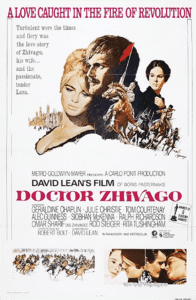By Dom Cioffi
I grew up under two extremes.
My father’s parents (my paternal grandparents) were hard-working, blue-collar laborers, with my grandfather being a self-employed plumber and my grandmother the quintessential mother and housewife.
They lived in a small two-story house directly across the street from a large factory and right behind the city’s largest shopping center. The area was known as “The Gut” given that it was the poorest section in town.

My mother’s parents (my maternal grandparents) were also hard-working, although through my grandfather’s resourcefulness in business and farming and the fact that his father was a banker, they were financially well off.
They lived in a large brick farmhouse on the outskirts of town, surrounded by rolling hills and streams. Inside the house were countless antiques and valuable artwork collected over generations.
I looked forward to going to both houses, mostly because I always felt safe and loved in either location. My grandmother in the city fed me well and catered to my every whim. And while my grandmother in the country did the same, her home offered the bonus of endless adventure, both inside the house and out.
One of my favorite pastimes when visiting her house was getting to use the family’s antique player piano (also known as a pianola).
A player piano is a self-playing piano that works via a pneumatic mechanism that blows air through perforated holes on rolls of paper. The action to play the piano can be electric or through the pumping of feet on pedals.
You could play a pianola just like an ordinary piano, but you could also play the music rolls that were purchased at music stores. This would be applicable to buying records to play on your record player.
My grandmother had nearly 100 music rolls sitting on top of her piano, with songs ranging from Christmas carols to ragtime classics to ’30s and ’40s mainstream gems like “Winchester Cathedral,” “Hello Dolly,” and “Yes, We Have No Bananas.” There were also a few more modern songs like “Hey Jude,” but they were rare.
Once my grandmother showed me the correct way to handle the music rolls and how to place them into the player, I would sit for hours listening and singing while watching the keys magically move.
I gained a great appreciation for the music I found in those rolls and I’m confident that piano was one of the reasons I developed such a great love of melody and a deep desire to learn how to play an instrument.
There was one song, however, that transcended all the others. It was a song that my grandmother loved deeply. In fact, I have a vivid memory of sitting next to her on the bench as she sang along while the music roll played.
The song was titled “Lara’s Theme,” but it is more popularly known as “Somewhere My Love.”
The song originated from a leitmotif used in the 1965 film “Doctor Zhivago.” A leitmotif is a short musical phrase that reoccurs during a film or piece of music to remind the listener of a person, place, or idea (think of the dun-dun-dun-dun sound of impending doom as the shark approaches in the “Jaws” movies).
After the success of “Doctor Zhivago,” an Oscar-winning lyricist named Paul Francis Webster wrote words to “Lara’s Theme” to create the song “Somewhere My Love.” Within weeks, Ray Conniff recorded the song and released it. It soon ran up the charts, finally topping out at #9 on the Billboard Hot 100.
That song is forever burned into my heart. Whenever I hear it, I think of my grandmother and that player piano. But it goes even deeper than that. There’s something ethereal about that melody that captivates me. In the moments that I hear it, I find that I stop whatever I’m doing and just listen – a sure sign that a song is transcendental.
January is notoriously lousy when it comes to new films and this year is no exception. Because of that I decided to go backwards in time and watch the aforementioned “Doctor Zhivago,” one of most beautiful love stories ever told.
Set against the harsh and unforgiving reality of the Russian Revolution, “Doctor Zhivago,” starring Omar Sharif and the mesmerizingly beautiful Julie Christie, delves into the depths of love and art and how some people refuse to compromise, even in the face of death.
While most people have heard of this film, few have watched it. I implore you to give it a try during these cold winter months. It’s nearly four hours long, but every second is worth it.
An epic “A” for “Doctor Zhivago.”
Got a question or comment for Dom? You can email him at [email protected].




